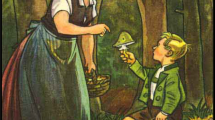Abstract
The Qur’an is considered by Muslim scholars to be one of the two primary sources of Islamic law. The Qur’an deals with many diverse matters, including beliefs, morals, ethics, legal issues and historical narratives. We are not concerned here with establishing the exact proportion of the Qur’an devoted to each of these various categories and in particular to legal rulings. Rather, the pivotal aim of the present investigation is to establish the fact that the whole Qur’an is interrelated, and that the non-legal material in the Qur’an ultimately supports its legal system. This article, therefore, attempts to contribute to the discussion on this issue by asserting that although a large part of the Qur’an does not contain explicit or even implicit legal rulings, it serves, however, to consolidate and establish the Islamic legal system. This assertion is founded on an analysis of the relationship between the legal verses and those with no direct legal rulings stated in them. This article will broadly assess three major themes in the Qur’an which are: God, the Prophet and His message and the present life with the Hereafter. It will underscore their relationship to explicit legal injunctions. These themes are doctrinal in nature but as the analysis will show, they are woven into the framework of the injunctions themselves thereby forging a link between creed and law.
Similar content being viewed by others
References
Abdel Haleem, M.A. 2011. Understanding the Qur’an themes and style. London: I.B.
Al-Bukhari, Muḥammad. 1987. Sahih. Beirut: Dar Ibn Kathir.
Al-Ghazali, Muhammad. 1400. Al-Munkhul. Damascus: Dar al-Fikr.
Al-Ghazali, Muhammad. 1413H. al-Mustaṣfā min ‘ilm al-uṣul. Beirut: Dar al-Kutub al-ilmiyyah.
Al-Nawawi, Yahiya. 1392. Sharh Sahih Muslim. Beirut: Dar Ihya al-Turath.
Al-Qurṭubī, Muḥammad. 1372. Tafsir. Cairo: Dār wa-Maṭābiʻ al-Shaʻb.
Al-Razi, Muhammad. 1400H. Al-Mahṣul. Riyadh: Imam University.
Al-Suyuti, Muḥammad. 1993. Al-Dur al-Manthur. Beirut: Dar al-Fikr.
Al-Tabari, Muḥammad. 1405. Tafsir. Beirut: Dar al-Fikr.
Al-Zarkashi, Muhammad. 1391. al-Burhān fī ʻulūm al-Qurʼān. Beirut: Dar al-Marifah.
Dhahabī, Muḥammad. 1981. Siyar aʻlām al-nubalāʼ. Bayrūt: Muʼassasat al-Risālah.
Goitein, S.D. 1960. The birth-hour of Muslim Law. Muslim World 50: 1.
Gwynne, Rosalind W. “Hell and Hellfire.” Encyclopaedia of the Qur’ān. General Editor: Jane Dammen McAuliffe, Georgetown University, Washington DC. Brill Online, 2015. Reference. School of Oriental and African Studies (SOAS).http://referenceworks.brillonline.com/entries/encyclopaedia-of-the-quran/hell-and-hellfire-EQCOM_00083.
Hallaq, Wael B. 1997. A history of Islamic legal theories: An introduction to Sunnī uṣūl al-fiqh. Cambridge: Cambridge University Press.
Ibn al-Qayyim, Muhammad. 1973. Madārij al-sālikīn. Beirut: Dar al-Kitab al-Arabi.
Ibn Ḥajar al-ʻAsqalānī, Aḥmad. 1379. Fatḥ al-bārī bi-sharḥ Ṣaḥīḥ al-Imām Abī ʻAbd Allāh Muḥammad ibn Ismʻ̄īl al-Bukhārī. Beirut: Dar al-Ma‘rifah.
Ibn Kathir, Ismāʻīl. 1401. Tafsir. Beirut: Dar al-Fikr.
Ibn Qudamah, Abdul Allah. Rawḍat al-nāẓir wa-junnat al-munāẓir fī uṣūl al-fiqh ʻalá madhhab al-Imām Aḥmad ibn Ḥanbal. Riyadh: Imam University.
Ibn Taymiyya, Aḥmad. 1403. Al-Istiqamah. Madinah: Imam University.
Ibn Taymiyya, Aḥmad. Majmu al-Fatwa. maktabat Ibn Taymiyya.
Kamali, Mohammad. 2003. Principles of Islamic jurisprudence. Cambridge: Islamic Texts Society.
Khan, Ruqayya. “Error.” Encyclopaedia of the Qur’ān. General Editor: Jane Dammen McAuliffe, Georgetown University, Washington DC. Brill Online, 2015. Reference. School of Oriental and African Studies (SOAS). http://referenceworks.brillonline.com/entries/encyclopaedia-of-the-quran/error-EQSIM_00135.
Lalani, Arzina R.. “Judgment.” Encyclopaedia of the Qur’ān. General Editor: Jane Dammen McAuliffe, Georgetown University, Washington DC. Brill Online, 2015. Reference. School of Oriental and African Studies (SOAS). http://referenceworks.brillonline.com/entries/encyclopaedia-of-the-quran/judgment-EQSIM_00244.
Netton, Ian Richard. “Nature as Signs.” Encyclopaedia of the Qur’ān. General Editor: Jane Dammen McAuliffe, Georgetown University, Washington DC. Brill Online, 2015. Reference. School of Oriental and African Studies (SOAS). http://referenceworks.brillonline.com/entries/encyclopaedia-of-the-quran/nature-as-signs-EQCOM_00133.
Newby, Gordon Darnell. “Generations.” Encyclopaedia of the Qur’ān. General Editor: Jane Dammen McAuliffe, Georgetown University, Washington DC. Brill Online, 2015. Reference. School of Oriental and African Studies (SOAS). http://referenceworks.brillonline.com/entries/encyclopaedia-of-the-quran/generations-EQSIM_00168.
Rubin, Uri. “Muḥammad.” Encyclopaedia of the Qur’ān. General Editor: Jane Dammen McAuliffe, Georgetown University, Washington DC. Brill Online, 2015. Reference. School of Oriental and African Studies (SOAS). http://referenceworks.brillonline.com/entries/encyclopaedia-of-the-quran/muhammad-EQCOM_00126.
Sanneh, Lamin. “Gratitude and Ingratitude.” Encyclopaedia of the Qur’ān. General Editor: Jane Dammen McAuliffe, Georgetown University, Washington DC. Brill Online, 2015. Reference. School of Oriental and African Studies (SOAS). http://referenceworks.brillonline.com/entries/encyclopaedia-of-the-quran/gratitude-and-ingratitude-EQSIM_00180.
Smith, Jane I. “Eschatology.” Encyclopaedia of the Qur’ān. General Editor: Jane Dammen McAuliffe, Georgetown University, Washington DC. Brill Online, 2015. Reference. School of Oriental and African Studies (SOAS). http://referenceworks.brillonline.com/entries/encyclopaedia-of-the-quran/eschatology-EQCOM_00055.
Smith, Jane I.. “Faith.” Encyclopaedia of the Qur’ān. General Editor: Jane Dammen McAuliffe, Georgetown University, Washington DC. Brill Online, 2015.Reference. School of Oriental and African Studies (SOAS). http://referenceworks.brillonline.com/entries/encyclopaedia-of-the-quran/faith-EQCOM_00061.
Wheeler, Brannon M. “Good Deeds.” Encyclopaedia of the Qur’ān. General Editor: Jane Dammen McAuliffe, Georgetown University, Washington DC. Brill Online, 2015. Reference. School of Oriental and African Studies (SOAS). http://referenceworks.brillonline.com/entries/encyclopaedia-of-the-quran/good-deeds-EQSIM_00175.
Wheeler, Brannon M.. “Evil Deeds.” Encyclopaedia of the Qur’ān. General Editor: Jane Dammen McAuliffe, Georgetown University, Washington DC. Brill Online, 2015. Reference. School of Oriental and African Studies (SOAS). http://referenceworks.brillonline.com/entries/encyclopaedia-of-the-quran/evil-deeds-EQSIM_00139.
Author information
Authors and Affiliations
Corresponding author
Additional information
The rendering of almost all Qur’anic verses into English is based on Abdel Haleem’s translation of the Qur’an.
Rights and permissions
About this article
Cite this article
Al-Matroudi, AH. The Relationship Between Legal and Non-legal Verses in the Qur’an: An Analytical Study of Three Themes of the Qur’an. Int J Semiot Law 29, 261–283 (2016). https://doi.org/10.1007/s11196-015-9452-7
Published:
Issue Date:
DOI: https://doi.org/10.1007/s11196-015-9452-7




